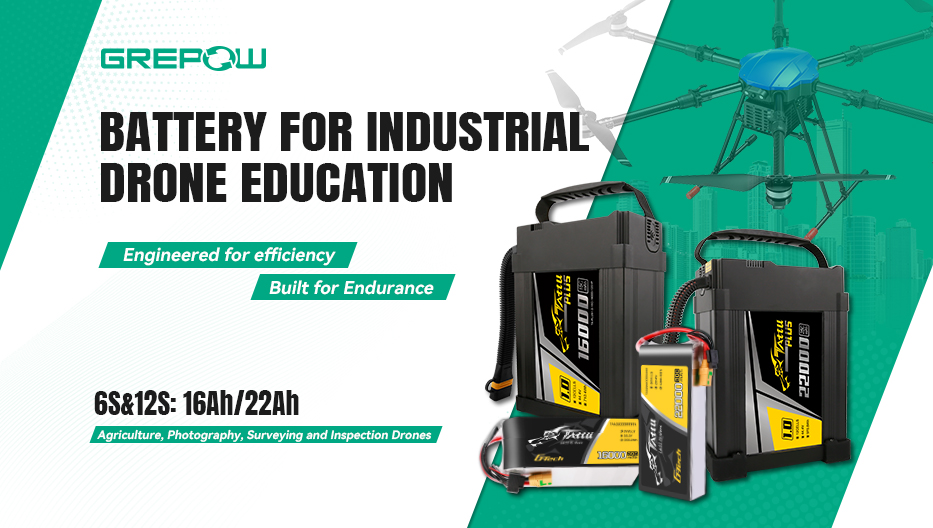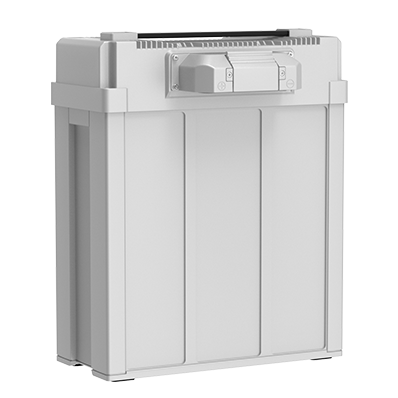What Is a Mosfet in Drone Batteries?
In the world of drone technology, efficiency and safety are paramount, especially when it comes to battery performance. One critical component that plays a pivotal role in achieving these goals is the MOSFET. Acting as an electronic switch, a MOSFET effectively manages the flow of electrical current within drone batteries, ensuring optimal power delivery while safeguarding against potential hazards. This article delves into the workings of MOSFETs, their importance in drone battery systems, and key considerations for their selection.
What Is a Mosfet in Drone Batteries?
MOSFET stands for Metal-Oxide-Semiconductor Field-Effect Transistor. A MOSFET in a drone battery is a semiconductor device that plays a crucial role in managing power delivery, safety, and efficiency. In simple terms, it's a type of type of transistor or switching device.
●Type of Transistor: A MOSFET is a type of field-effect transistor that controls the flow of electrical current. It has three terminals: the gate, the drain, and the source.
●Switching Device: In the context of drone batteries, MOSFETs are often used as electronic switches that can turn the current on or off rapidly.

How Does It Work?
MOSFETs are crucial components in drone batteries, playing a key role in Battery Management Systems (BMS). The operation of a MOSFET is based on controlling the conductivity of a channel between two terminals (source and drain) using a voltage applied to a third terminal (gate). Their ability to switch rapidly and handle high currents makes them ideal for applications demanding precision and reliability in power delivery. Here’s a simplified breakdown of how they function:
Voltage Control:
The voltage applied to the gate terminal controls the conductivity between the drain and source terminals. When a voltage is applied to the gate, the MOSFET allows current to flow; when the voltage is removed, it stops the current.
Cell Balancing:
●Drone batteries are made up of multiple individual cells.
●MOSFETs help ensure all cells have a similar voltage level by acting as switches.
●If one cell starts charging faster than others, a MOSFET can temporarily disconnect it, preventing overcharging.
Overcurrent Protection:
●MOSFETs can detect if the current flowing through the battery is too high.
●If this happens, the MOSFET quickly switches off, protecting the battery from damage.
Thermal Management:
Modern MOSFET designs incorporate features that help dissipate heat generated during operation, which is essential in preventing thermal runaway situations that could lead to battery failure or fire.
Temperature Control:
●Some drone batteries have built-in temperature sensors.
●MOSFETs can be used to control heating or cooling elements within the battery to maintain optimal operating temperatures.
Low On-Resistance:
A key feature of MOSFETs is their low on-resistance (RDS(on)), which minimizes energy losses during operation. This is crucial for extending flight times and improving overall efficiency.
Selection Criteria for MOSFETs in Drone Batteries
When selecting MOSFETs for drone applications, several factors are considered:
●Current Rating: The MOSFET must be able to handle peak currents that can occur during flight. For instance, some drones may require MOSFETs rated for hundreds of amps to accommodate high bursts of power during maneuvers.
●Voltage Rating: The voltage rating should exceed the maximum voltage produced by the battery pack. For example, a 6S LiPo battery can produce up to 25.2V when fully charged, necessitating a MOSFET rated for at least 30V or higher to ensure reliability under transient conditions.
●Gate Drive Voltage: A higher gate drive voltage can enhance the switching performance of the MOSFET, ensuring it turns on fully and minimizes conduction losses. Typically, a gate voltage around 10V is ideal for many power MOSFETs
Do All Smart Drone Batteries Have Mosfets?
Not all smart drone batteries necessarily have MOSFETs, but most smart drone batteries incorporate MOSFETs, especially those with advanced battery management systems (BMS). These transistors are essential components of the Battery Management System (BMS), which is responsible for monitoring and controlling the battery's health and performance.
Grepow 3.5 & 4.0 High Power Smart Drone Battery with MOSFETs
The Tattu 3.5 and 4.0 High Power Smart Drone Batteries are designed to enhance the performance of heavy-lifting drones, supporting a maximum takeoff weight (MTOW) of 70-100 kg. Featuring a high capacity of 30Ah, these batteries significantly extend flight times. They support 4C-5C fast charging, allowing for rapid recharging from 30% to 95% in just 10 minutes, which is crucial for operational efficiency. Additionally, an improved ventilation system enhances heat dissipation, ensuring optimal performance during demanding tasks. The inclusion of built-in MOSFETs in the Tattu 4.0 series UAV battery further simplifies installation and enhances safety by reducing the risk of sparking during connections, making these batteries suitable for various industrial applications, including agriculture and inspection tasks. If you have any questions or needs, please feel free to contact us at info@grepow.com.

Related Articles
-

What Is a Long Endurance Drone?
2025-04-16 -

Empowering Drone Training with Grepow’s Tailored Battery Solutions
2025-04-15 -

Four Specialized Lithium-Ion Battery Types Basis
2025-04-10
Related products
-

Tattu 4.0 14S 30Ah HV 35C 53.2V Lipo Smart Drone Battery
-

Tattu 4.0 14S 20000mAh HV 25C 53.2V UAV Lipo Smart Battery
-

Tattu 3.0 18S Lipo 30Ah 68.4V Smart UAV Drone Battery

















































